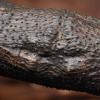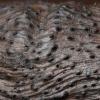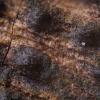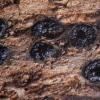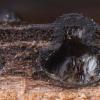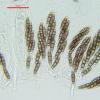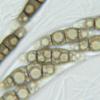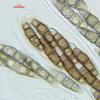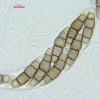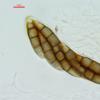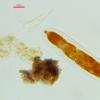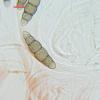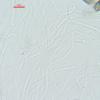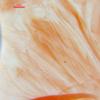
21-11-2025 10:56
 Christopher Engelhardt
Christopher Engelhardt
Very small (~0,5 mm) white ascos, found yesterday

14-11-2025 16:26
 Marian Jagers
Marian Jagers
Hello everyone, On dead wood of Cytisus scoparius

17-11-2025 21:46
Philippe PELLICIERBonjour,Récolté sur bois pourrissant de feuillu

20-11-2025 14:14
Mick PeerdemanFound on the leaves of 'Juglans regia' in the Neth

20-11-2025 13:07
Mick PeerdemanIn January i found these black markings on the dea

20-11-2025 12:38
Mick PeerdemanDear all,Last week i stumbled upon a leaf of ilex

19-11-2025 23:21
 carl van den broeck
carl van den broeck
Dear guestIn Waardamme, Belgium, I found dozens of
I found an interesting dothideomycete in an old stream bed near water. It resembles description of T.lineolatispora with the striate suface of the spores but I'm kinda short on literature with these. Substrate is some old wooden stick of unknown origin that appeared to be waterlogged some time in the past. Would someone perhaps have a bit more insight or have another suggestion?
22.3.2025, floodplain lowlands forest, Ižakovci, Slovenia.
Best regards!

this fits well T. wegeliniana Holm described in 1988 by Holm & Holm (studies in Lophiostomataceae). Sorry, I don't have the paper in pdf format.
T. lineolatispora is indeed very similar by its ascospore morphology but was found in a mangrove in Mexico. If proved identical, it would be a later synonym (1992).
Best,
Jacques
Thanks for the reply! I was just reading that paper before the post and it bothered me that I didn't find any info on the spore striation? But otherwise I was thinking the same and agree on the written. Also striation is sometimes barely visible and it might be also overlooked? I later found an older chat here on forum where striation is mentioned. What is on the other hand difference with T.hydrophila?

to my knowledge, the striated ascospore wall is the most reliable characteristic distinguishing T. wegeliniana from T. hydrophila. I agree it may be easily overlooked.
T. hydrophila is an ill-defined taxon, variously interpreted in the past, thus ambiguous.
All phylogenetic results trend to show Trematosphaeria is paraphyletic, when not polyphyletic. It was an attractive name accommodating fairly different species and unfortunately these two aquatic taxa were not studied phylogenetically. Welcome to the world of freshwater ascomycetes!
Jacques
Yes, it seems like there is still much clarification that needs to be done with many of these small ones, same as with larger ones on the other hand. But as a former hobby fisherman it's always a pleasure to find ones associated with water.
Best regards!


